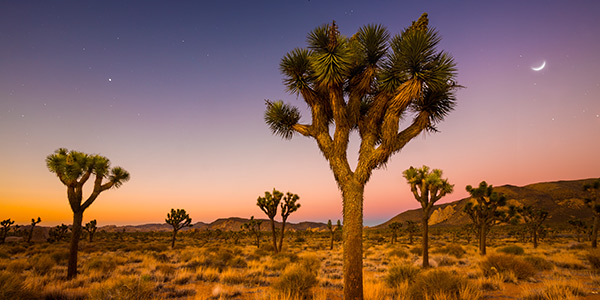Science is Fun Fridays!
Yucca brevifolia - Joshua Tree
They were named by Mormon settlers who felt that their outstretched limbs guided them on their westward journey. But they're not actually trees, they're succulents. Living in dry ecosystems, such as the Mojave Desert, they are well adapted to store water.
Since they aren't trees, they don't have annual growth rings, so determining their age can be difficult. Scientists have to measure the height of the tree and then divide by an estimate of growth per year, (and it is a slow growth). One in California is believed to be nearly 1,000 years old, but 150 is the more common lifespan.
Joshuas need a cold period in order to flower, and because of this they are vulnerable to climate change. The US Fish and Wildlife Service is currently reviewing listing the plant under the federal Endangered Species Act. In September 2020, California added it to their Endangered Species Act, and it is illegal to cut down, damage, or remove a Joshua Tree in the state.
The Joshua shares a mutualistic symbiotic relationship with the Yucca moth. It is the only insect to transfer pollen between the flowers, and then it lays its eggs inside the flower. When the larvae hatch, they eat some seeds, and the rest can disperse to make new trees.
25 species of bird nest in the Joshua trees, lizards use them for cover, and many mammals rely on the plant for food, including humans. Native Americans would use the tough leaves for making baskets and sandals.






Comments
Post a Comment